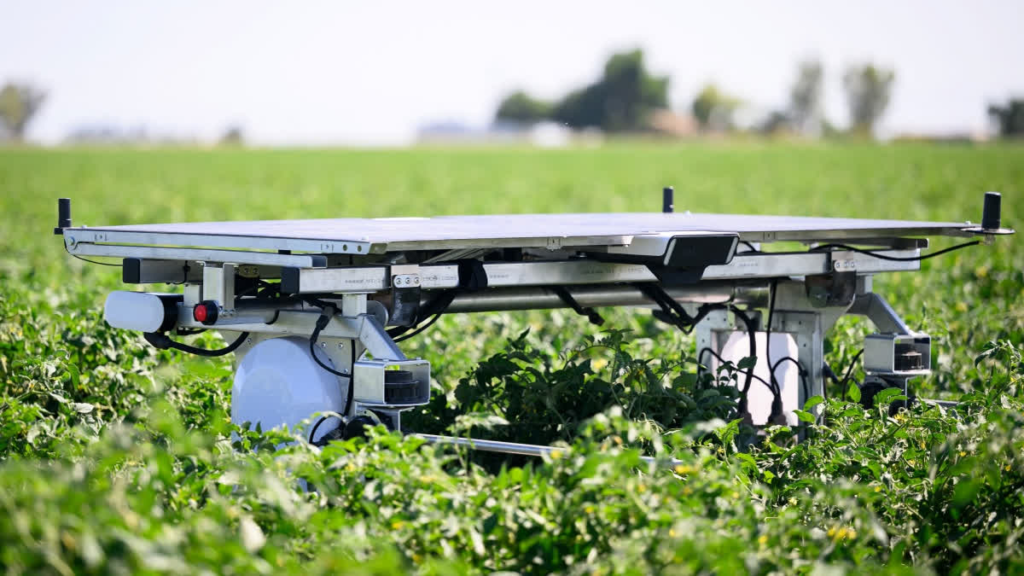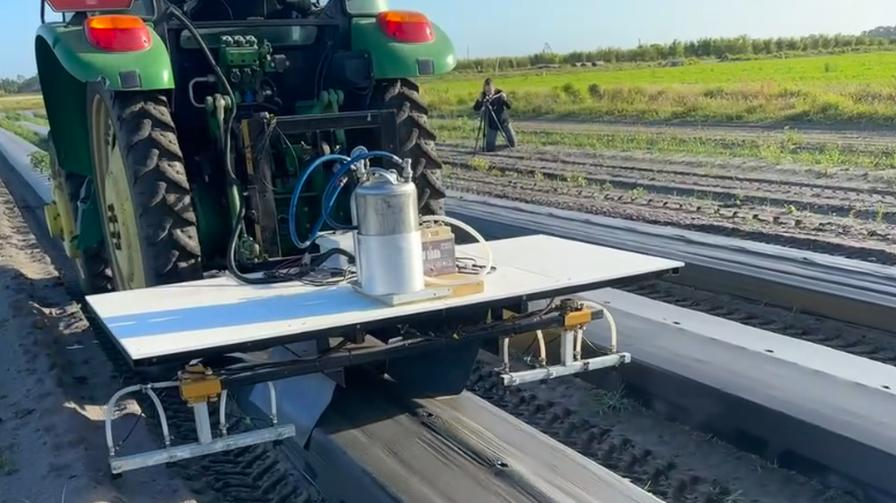Targeted weed control using AI is transforming the way tomato farmers manage their fields. With rising costs of herbicides, labor shortages, and increasing demand for sustainable farming, AI offers a breakthrough that not only improves efficiency but also reduces expenses. Many growers are now seeing savings of up to 70%, thanks to the precision and power of artificial intelligence.
The Growing Need for Smarter Weed Control
Tomato farming is labor-intensive. Weed management, in particular, is a costly and time-consuming task. Traditional methods often involve spraying herbicides across entire fields. This process not only wastes chemicals but also harms crops, soil, and surrounding ecosystems.
Farmers are looking for better solutions and they’ve found one in targeted weed control using AI. By identifying and eliminating weeds precisely, AI helps tomato growers apply treatments only where needed. This drastically reduces chemical usage and minimises damage to crops.

How Targeted Weed Control Using AI Works
Targeted weed control using AI uses cameras, sensors, and smart algorithms to identify weeds among tomato plants in real-time. These systems are often mounted on tractors or robots that scan each row as they move. Once a weed is detected, the system can apply herbicide directly to it or remove it mechanically.
This level of precision ensures that only weeds are treated, reducing the amount of herbicide used by up to 90%. For tomato growers, this means saving money while maintaining healthy crop yields.
AI-based weed control also collects data from each pass across the field. Over time, this data can help farmers understand weed patterns, plan better crop rotations, and manage their fields more efficiently.
Real Savings for Tomato Growers
The biggest benefit of targeted weed control using AI is cost savings. On average, tomato growers spend a large part of their budget on herbicides and weed management labor. By switching to AI-powered systems, they are seeing reductions in herbicide use by 60% to 90% and labor costs drop significantly.
In some pilot farms, total savings have reached up to 70% of previous weed control budgets. These savings can be reinvested into other areas of farming like irrigation, crop protection, or soil health, leading to even better long-term results.
AI Reduces Environmental Impact
Another major benefit of targeted weed control using AI is sustainability. Fewer herbicides mean less chemical runoff into nearby water sources, reduced air pollution, and better protection for non-target plants and animals.
Tomato farms that adopt AI technology are not only becoming more profitable but also more eco-friendly. This aligns with the growing global demand for cleaner, greener farming practices.
Challenges and Limitations
Despite the clear benefits, targeted weed control using AI still faces a few challenges. The initial cost of purchasing AI systems can be high, making it harder for small or mid-sized tomato farms to adopt the technology quickly.
Also, the effectiveness of AI systems depends on the quality of their training. In regions with unfamiliar weed species or crop patterns, these systems may need additional adjustments to perform accurately.
However, as more farms adopt this approach, the technology continues to improve and costs are expected to drop. Government subsidies and agri-tech partnerships can also help smaller farmers make the switch.
A Look at the Future of Tomato Farming
The use of targeted weed control using AI is only one part of a larger shift toward precision agriculture. As AI continues to evolve, tomato growers may soon use it for disease detection, harvesting predictions, and even autonomous planting.
Smart farming tools are already being integrated with satellite data, weather forecasting, and real-time soil monitoring. This offers a complete picture of a farm’s health, helping farmers make faster and smarter decisions.
With the global tomato market expected to grow significantly over the next decade, farms that embrace AI technology early will likely enjoy a competitive edge.

Expert Opinions on AI Weed Control
Agricultural experts agree that targeted weed control using AI is a game-changer. Dr. Sameer Rathi, a leading agri-tech researcher, states that “AI is taking the guesswork out of farming. It’s helping tomato growers become more precise, productive, and profitable.”
Farmers who have already adopted AI weed control systems report that they would never go back to traditional methods. For them, the technology pays for itself within a few growing seasons.
Case Study: AI Weed Control on a Tomato Farm
One mid-sized tomato farm in Maharashtra, India, adopted an AI-powered weed detection system in 2024. Before the switch, they spent ₹5,00,000 annually on weed control. After using targeted weed control using AI, their expenses dropped to just ₹1,50,000 a 70% reduction.
Besides savings, they also noticed healthier plants, reduced soil erosion, and better moisture retention due to less frequent chemical application. The farm has since invested in other AI tools, expanding its smart farming strategy.
Why Tomato Growers Should Act Now
Targeted weed control using AI is no longer just a futuristic idea. It is already being used in several parts of the world with proven results. The longer farmers wait to adopt this technology, the more they risk falling behind in an increasingly competitive market.
Governments and agricultural departments are also starting to support the adoption of AI in farming. Subsidies, pilot programs, and public-private partnerships are available to help tomato growers make the leap into precision agriculture.
By adopting targeted weed control using AI, tomato farmers are not only saving money they’re investing in a sustainable and profitable future.
Do follow Gulf Magazine on Instagram
Also Read – Campaign to Educate Youth: 5 Shocking Crime Facts



